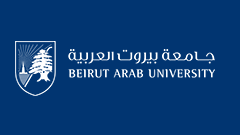Keywords
City’s expansion, green, affordable housing, urban model
Disciplines
Architecture | Business | Engineering | Life Sciences
Abstract
The footprint of the city is at major risk. Cities are growing out in a fast and unplanned way thus increasing ground stress, both environmentally and economically. When the population increases, the suburbs are exposed to an amorphous expansion, which leads to a modification in the form and content of the city’s periphery. Greater Sour is one of the coastal cities in Lebanon that passed through major phases of expansion over time and has the potential for major future growth. This growth is resulting in a radial-shaped structure located along the major roads linking the city to the surrounding towns. It is also affecting the green natural environment surrounding the city. This paper aims to provide a vision for developing the city’s expansion through the application of a sustainable urban model that ensures a healthy living environment and maintains the green natural environment in the city’s periphery. The reinterpretation of the city’s expansion will be through the examination of the reasons and shape of urban growth and the study of the efficiency of implementing a green affordable housing as a tool to enhance the urban expansion of the city. In addition to studying similar and distinctive examples of green housing neighborhood, the paper analyzes its relationship to the context (social and economic) and its future impact on the surrounding, spotting light on the finger plan in the Greater Copenhagen area. After analysis and study of the case, we could find that the focus now is to lead the built out and organize the expansion of the city by creating a flexible system to follow.
Recommended Citation
Youssef, Maged and Dikmak, Aya
(2020)
"Re-interpretation of City’s Radial Expansion in The Developing Countries through Green Affordable HousingCase Study: Greater Sour Southern Expansion Axis, Lebanon,"
BAU Journal - Creative Sustainable Development: Vol. 1:
Iss.
2, Article 6.
DOI: https://doi.org/10.54729/2789-8334.1019
ISSN
2789-8334

